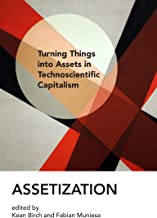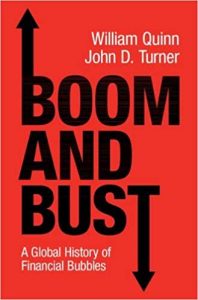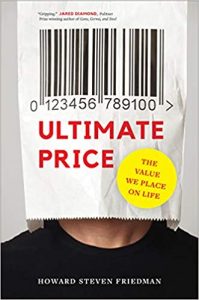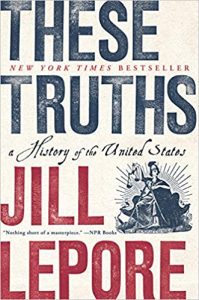Monthly Archives: July 2020
In August we’re going to have a week’s holiday, and I’ll also be declining all but the most absolutely urgent online meetings, so am looking forward to some reading. The pile of books to read is very satisfying.
Meanwhile, this week I’ve enjoyed the newly-published Boom and Bust: A Global History of Financial Bubbles by William Quinn and John Turner. The book recounts the history of 10 bubbles in history, some well known – the South Sea Bubble, Wall Street in the 20s – others less so – I for one had never heard of the British Bicycle Mania of the late 1890s. It also ranges from 19th century Australia to modern China.
Each episode is set in the context of a framework described in the first chapter, the Bubble Triangle. These are the three necessary conditions for a bubble to take off: good marketability of the assets involved; abundant money & credit; and large numbers of speculators. With these in place, they argue there are two potential sparks: technology (radio in the 1920s, bicycle innovations in the 1890s) or politics (often, governments seeking to engineer higher asset prices to meet a policy goal, such as encourgang home ownership (the early to mid 2000s) or reducing government debt (John Law in France in the 1760s).
This is a very nice framework, and the book is an enjoyable read, its large array of references kept unobtrusive while testimony to the amount of research that has gone into it. There are some interesting points along the way. For example, the authors argue that the form of railway network shaped by the railway mania of 1848 locked in inefficiencies “which have plagued British railways down to the present day.” Other, less laissez faire, countries invested in a better planned and less duplicative network at lower cost. In Britain, they argue, politicians were too accomodating to constituency interests rather than able to plan a national network.
However, they also highlight the distinction between bubbles sparked by technology and those sparked by politics: “Technology bubbles often involve large sums of money flowing into extremely innovative sectors of the economy, which might otherwise have trouble getting off the ground.” During political bubbles, the money flows into sectors where there are few positive externalities.
The book ends by returning to the Bubble Triangle as a means of predicting when a bubble might occur and some discussion of policy choices – to avert the bubble (hard, with the political ones), or clean up afer it? The final chapter includes a discussion of the role of the media, whose role during bubbles has not always been blameless.
All in all, a great read and a great addition to the literature on financial bubbles.
Time and times
I went into my office on Friday to pick up some books out of their quarantine, mainly things i need to get papers written, but I also rescued Changing Times: Economics, Policies and Resource Allocation in Britain Since 1951 by Martin Chick. I’ve torn through it, a very interesting book.
As the subtitle indicates, it’s a history of postwar economic policy in the UK, ranging over six decades and issues spanning industrial policy, macro and trade policies, environmental, labour market, health and education policies. It’s also only 400 pages, to give an indication of the quite long focal length it necessarily requires. Given this broad span, the structure of the book is provided by the theme of time. Time in two senses: how policies relate to the distribution of economic welfare between generations; and the importance of assets, stocks as well as flows, and in particular the state’s withdrawal from investment in the future over this period.
This doesn’t 100% work as a thematic structure but it is nevertheless extremely interesting to reflect on some familiar trends and episodes in postwar economic history through this lens. Chick also draws on a huge range of the economics literature in order to cover the various policy areas, and has obviously spent hours in the National Archives reading Treasury papers and other policy documents. (Indeed, by the <6 degrees of separation rule, he lodged with my in-laws while staying at Kew to do the archive work.)
My favourite chapter was the one on privatisation of state-owned industries, which politely eviscerates the rationale for the policy. As Chick writes: “What was perhaps under-appreciated at the time of privatisation was the historical novelty of trying to induce large sunk investment from utilities operating in competitive markets.” After all, profit rates in the utilities sector are never spectacular. He goes on to interpret nationalisation as being “preferred to regulation as a means of extracting for consumers the benefits of improvements in productivity.” Privatisation was introducing risk into areas “from which it had been absent for decades”, the risk of costly, lumpy investments not delivering an adequate return, and technological risk – as well as altering the distribution of returns.
However, there is loads of interest in every chapter even for someone who has read a lot of the economic and political history of this period. For instance, the London smog of 5-8th December 1952 is thought to have led to the deaths of 4000 Londoners, a staggering number. Yet it wasn’t until 7 months later that the government even appointed the Beaver Committee on Air Pollution. The same chapter on environmental policy is super-interesting on the relationship between stocks and flows of different types of natural asset – fish vs oil.
Chick concludes the book: “Considerations of time and space affect all of the major issues of concern today (housing, utility output, global warming, infrastructure, educational opportunities, access to healthcare, trade, the internet and so on).” I have quibbles about the book – for instance, it would have been nice to replace dense paragraphs describing data and trends with some charts. But in the end, what’s not to like about a book with references ranging from Derek Parfit and Frank Ramsey to articles about the Cod Wars of the 1970s or technical reports on council house sales?
Ultimate price
The weeks are speeding past in a blur of Zooms. However, I’ve found time to read – alongside the rivalry, gore, sex and drama of Tom Hollander’s Rubicon – Ultimate Price: The Value We Place on Life by Howard Steven Friedman.
This is an unpromising subject in some ways: policies and regulations often place an implicit, or sometimes explicit, value on human life. How is that value determined? Is it consistent in different domains? What’s the fair and ethical way to make such judgments, which are inevitable when it comes to deciding which costly safety measures to enforce through regulation or whether to purchase an expensive drug for medical treatments, or how much to compensate crime or accident victims.
The short answers are that the value of life – even the dry-sounding Value of a Statistical Life – is inconsistently established and rarely debated. Monetary values and lives never feel like they belong in the same conversation. Rather, the issue is often the subject of industry lobbying and political horsetrading. Some regulations – eg environmental ones imposing costs on industry – are massively scrutinised. Others – eg extra airline security – are not. Some lives are valued at millions, others – including foreign civilians killed by drones, say – are not valued at all. Cost benefit analysis is sometimes uncomfortable, consistent cost benefit analysis even more so.
I picked up the book with a slight sense of duty as I do one lecture on this area, and can report that it’s very clear and well-informed. It has loads of thought-provoking examples. There is a US focus (health insurance) but the applications are wide. It will make a great supplementary read, giving students loads of examples to get them thinking and plenty of additional references. There isn’t as much as you might think giving an overview of these issues so I welcome this one and will add it to the reading list.
Self-evident truths?
Reading Jill Lepore’s These Truths: A History of the United States has been quite a commitment – 800 pages and too big to carry around even as a paperback. It was well worth it. What a brilliant book.
Even at such a length, to cover the history of the US from Columbus to Trump requires a long focal length. The thread Lepore draws through the entire text is slavery and race, America’s original sin, and the intention of the Founding Fathers (“We hold these truths to be self-evident…”) and meaning of the American constitution. What does the founding dedication to equality mean in practice? But this is too reductive. This is a dense, rich book well worth the two weeks it has taken me to read.
Lepore is a wonderful writer, which helps. Consider the early section where she discusses the deal at the 1787 constutional convention to count a slave as three-fifths of a person for the purposes of determining states’ populations and therefore representation in Congress – a deal that gave southern states a lasting advantage in the legislature. During a break, Madison asked after the whereabouts of one of his slaves, Anthony: “Anthony had gone looking to be five-fifths of a person.” He had run away.
Or this: “Walter Lippman wore a three piece pinstripe suit the way a tiger wears his skin, but the cue to his acuity came in the raised eyebrows, as pointed as the tip of an arrow.”
The more modern sections are more familiar, but I like the way Lepore uses certain themes to ensure the book is more than one thing after another. The key ones for the 20th century are the media – the term “fake news” was in circulation in the 1930s, when Goebbels was an admirer of Edward Bernays, and both opinion polling and modern lobbying and campaigning were taking off – and computer technology. “Computers are often left out of the study of history and government, but starting at the end of the Second World War, history and government cannot be understood without them. Democracies rely on an informed electorate; .computers … would both explode and unsettle the very nature of knowledge.”
It turns out – now I look her up – Lepore has a podcast called The Last Archive, which must be worth a listen. I came across These Truths in a New York Times article about what Joe Stiglitz is reading – many other appealing reads on his list.





